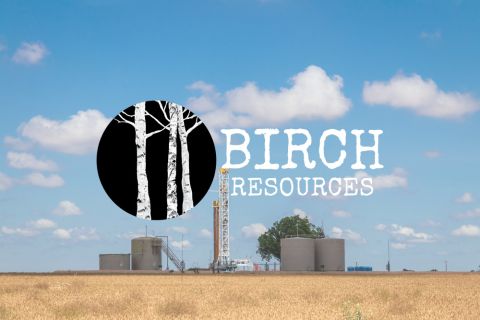Deep-pocketed financial players, such as commercial banks and investment banks, are being drawn to the midstream market, where they are teaming with experienced energy managers to start gas-marketing ventures or acquire midstream assets. Amid the recent dizzying pace of midstream-asset turnover, commercial banks such as Wachovia, investment banks such as Bear Stearns, and private-capital providers such as Natural Gas Partners, are getting into the act. The flurry of assets changing hands can be attributed, in part, to the demise or repositioning of the mega-merchants of old such as Enron and El Paso Corp. The shake-up had a domino effect, causing many companies to sell significant, and often attractive, physical assets to generate urgently needed cash. "The collapse of the mega-merchants created a ripple effect through the entire industry in the form of increased stakeholder scrutiny of corporate financials, new regulation, and an emphasis on credit management and credit risk," says Gary Vasey, vice president of UtiliPoint International's trading and risk-management practice. "Under these pressures, many larger companies have to clean up their balance sheets. This industry introspection is often the basis for the sale of assets that are very attractive to others." The continuing adjustment of asset portfolios and business models enables new, non-traditional players such as energy hedge funds, investment banks and master limited partnerships (MLPs) to enter the playing field. And many executives have started new midstream firms as well, to aggregate assets. "Overall, investors appear to be warming to the midstream sector, " Vasey says. "Funding is more readily available for this type of investment than it has been in the past." The mega-marketers' primary service was price, transparency of price and credit, in that order. When the credit went bad, they could no longer provide price and price transparency. Those three issues are no less important now-but the priority has changed. Today credit and service are valued commodities, arguably more valuable than price alone. Tristream Energy. Tony Catalano, one of the founders of Tristream Energy, a new midstream company based in Sugar Land, Texas, offers a further explanation. "We see the influx of capital driven largely by the growth of MLPs and search for yield by the retail investor. We also have observed that MLPs have become more comfortable with owning processing assets because of their ability to hedge the commodity risk, and thereby giving the assets characteristics more similar to a fee-based business." In the current high asset-price environment, with increased drilling opportunities, there are promising opportunities to create value by developing midstream infrastructure, Tristream's founders believe. That's why they formed the firm. The management team formerly operated more than 2,500 miles of gas-gathering lines and associated assets that were sold in 2004. In July 2005, a trio of veteran midstream managers-Ken Purgason, Mike Urban and the aforementioned Tony Catalano-reunited to form Tristream. It will acquire and develop and operate midstream infrastructure. Purgason and Catalano were the cofounders of Sago Energy and Urban was the chief financial officer. Sago was sold in 2004 to WTG Gas Processing, a division of West Texas Gas Inc., which was in distribution, marketing, transmission, oil and gas production, gathering and processing, and refined-products distribution. "While marketing is among the service options we can provide, this service would typically be provided in conjunction with a company-owned physical asset, and not as a stand-alone service," Catalano explains. "Our marketing strategy is similar to our approach at Sago Energy, where we aggregated small volumes of gas from hundreds of wells. Aggregation can be more cost-effective for the producer and can provide more marketing options by providing connections to multiple gas-transmission lines." Sago was formed by management and private-equity investors Haddington Ventures LLC and Quantum Energy Partners. Haddington's partners included the utility holding companies Vectren Corp. and Unisource Energy, and affiliates of financial powerhouses Citigroup and Prudential. Haddington Ventures. Principals at Houston-based Haddington Ventures LLC believe the midstream offers attractive investment opportunities, driven largely by a shift in the sources of energy in North America, says Larry Bickle, a managing director. What's more, decreasing profits and credit downgrades have forced many larger energy merchants to sell their midstream assets to shore up their balance sheets. That's where Haddington enters. It seeks to acquire midstream assets, which generally require $20- to $50 million of equity and have an enterprise value of up to $150 million. "We expect to identify many of these opportunities proactively, using our extensive relationships within the midstream sector and our knowledge of the assets held by the large, integrated energy companies," Bickle says. "When acquisition markets become overheated, Haddington can and does turn to greenfield development of new infrastructure. As one of the few private-equity funds that will take midstream development risks, this gives us the opportunity to build or buy, depending on which approach is most profitable at a given time," Bickle says. Natural Gas Partners. External conditions and perceptions about midstream investing have changed for the better, says Billy Quinn, a Natural Gas Partners (NGP) managing partner based in Irving, Texas. But at NGP, midstream assets have always been a strategic focus. When formed in 1989, its first investment was in a midstream company. Today the firm has more than $2 billion of cumulative capital under management invested in E&P and midstream companies. NGP continues to be involved in funding midstream management teams and is an active buyer and seller as well. New investors increasingly view midstream assets as "highly coveted," a view that has not wavered at NGP, Quinn says. Midstream companies have always been, by default, involved in gas marketing to a degree. But, he says, in this high-priced environment, companies are increasingly seizing on the synergies of midstream assets and marketing, tied to physical transactions. Eagle Rock Energy, an NGP portfolio company, acquired Oneok's Texas Panhandle gas-gathering and gas-processing assets. The $528-million deal included six gas-processing plants with a capacity of 150 million cubic feet per day and current average throughput of 70%; approximately 3,700 miles of gas-gathering lines; and estimated gas liquid production of 13,500 barrels per day. The assets represent approximately $52 million of the $130 million in operating income for Oneok's gas-gathering and -processing segment. Eagle Rock Energy, formed in June 2002, currently has gas-gathering and -processing assets throughout Texas. "This acquisition is a natural fit for our asset base," says Alex Bucher, co-founder and chief executive. NGP was the majority shareholder of another company involved in a midstream transaction, this time on the seller side of the deal. Its Prism Gas Systems was sold to Martin Midstream Partners. The deal involved more than 330 miles of gas-gathering pipelines and a 50% operated interest in 150 million cubic feet a day of processing capacity in the producing regions of eastern Texas, northwestern Louisiana and the Texas Gulf Coast. The founders and staff of Prism were some of the same individuals who were instrumental in building the Union Pacific Resources/UP Fuels gathering and processing business, which was sold to Duke Energy Field Services in 1999 for $1.35 billion. From Martin Midstream Partners' perspective, "the Prism acquisition is our largest to date and provides us with access to a suite of assets that complement and enhance existing operations in our backyard," says Ruben Martin, president and chief executive. Wachovia-Resolute. Wachovia, the nation's fourth-largest bank holding company, entered gas marketing via its 50-50 joint venture with Denver-based Resolute Holdings, the parent of Resolute Natural Resources. This past July, they began commercial operations of Odyssey Energy Services, providing energy-marketing and -trading services to E&P companies and industrial, commercial and utility customers in the Rockies and Midcontinent primarily. Odyssey taps into the marketing expertise of Resolute and the energy derivatives capabilities and financial strength of Wachovia, says John Roncevich, head of commodity derivatives at Wachovia. "Since Odyssey's launch, Wachovia and Resolute have been surprised with the strength of demand Odyssey has experienced from both producers and consumers. Business has continued to exceed our expectations," says Roncevich. "Our clients have expressed a high level of comfort with and enthusiasm for our business model [combining physical- and financial-risk management]. As volatility has roiled the markets this year, many seeking to put in longer-term structures have been able to leverage the experience of the Odyssey team to meet their needs in the physical market, along with the stability and credit quality of Wachovia as a financial counterparty." Next, Odyssey plans to expand its geographic footprint beyond its initial focus of the West and Midcontinent, he says. Resolute was formed by former senior officers of HS Resources, an independent E&P company that was acquired by Kerr-McGee in 2001 for $1.8 billion. Nicholas Sutton, the former president of HS Energy Services, the marketing affiliate of HS Resources, is now chairman and chief executive of Resolute. Jim Kincaid, a veteran energy marketer and co-founder of Resolute Holdings, is the CEO of Odyssey, based in Tulsa. "Our clients are seeking solutions to physical delivery, trading and derivatives from firms that are not focused primarily on speculating on energy prices," Kincaid says. "As we grow, the company will become a full-service gas-marketing and -trading company offering service from coast to coast," he says. "We fully intend to provide marketing and trading services across all hydrocarbons. Perhaps, we will expand into power, but not for some time." Bear Stearns-Calpine. Late last fall, Bear Stearns and Calpine Corp., an independent power producer and merchant electricity generator, formed a marketing and trading venture to focus on physical gas and power, and related structured transactions. The new company, CalBear Energy, a wholly owned Bear Stearns subsidiary, benefits from the financial clout, risk-management expertise and client reach of investment-banker Bear Stearns, complemented by the intimate market knowledge, technology, trading ability, deal flow and customers of Calpine. (Editor's note: At press time it was not clear how Calpine's financial distress would affect this venture.) "This transaction provides us with a unique opportunity to quickly become a leading provider of liquidity, execution and clearing services in the physical energy market without compromising our disciplined approach to risk and capital allocation," says Warren Spector, president and co-chief operating officer of Bear Stearns. "Many of our hedge-fund, institutional-investor, public-finance and private-equity clients are active users of energy price-risk management services. Acquiring the expertise necessary to properly serve their needs has been a strategic priority for the firm," he says. Calpine has formed a wholly owned subsidiary, Calpine Merchant Services Co. Inc. (CMSC), as CalBear's exclusive agent to execute power and natural gas trades with CalBear clients that have entered into master trading agreements guaranteed by Bear Stearns. CMSC will also provide scheduling and back-office services to CalBear from its office in Houston. CMSC will be compensated for its services through a fee equal to 50% of the profits of CalBear. The largest turnover of midstream assets this year occurred when Dynegy, once largely an asset-based gas marketer, sold its midstream natural gas assets to Targa Resources for $2.3 billion. Targa, an independent midstream company, was formed in 2003 by Warburg Pincus to pursue gas gathering, processing and pipeline asset acquisition opportunities. Warburg Pincus-Targa. Warburg Pincus, which has approximately $12 billion under management and invests in a range of businesses, has provided equity to finance energy companies since the late 1980s, investing $1.5 billion in more than 20 energy companies. "The combined company, with a significantly expanded asset base in Texas, Louisiana and New Mexico, will be one of the top service providers across all segments of the natural gas liquids (NGL) value chain and a leading pure-play midstream energy company," says Rene Joyce, chief executive of Targa Resources, in which Warburg Pincus has invested. Joyce is a well-known midstream player, having been the president of Tejas Gas, which included more than 11,000 miles of gas pipelines and associated processing and storage facilities, before it was purchased by Shell Oil in 1998.
Recommended Reading
Baker Hughes Defies Nature with an Upgrade to Ol’ Fashioned Cement
2024-10-15 - Baker Hughes’ InvictaSet uses regenerative capabilities to provide operators with a sustainable cement solution that can last for years.
E&P Highlights: Oct. 14, 2024
2024-10-14 - Here’s a roundup of the latest E&P headlines, including another delay at one of the largest gas fields in the world and two major contracts in West Africa.
Bowman Consulting to Manage, Monitor Delaware Basin Wells
2024-10-14 - Bowman Consulting Group’s scope of work includes conducting detailed field surveys of above-ground infrastructure assets across well sites of up to to 8 acres.
KBR Awarded Engineering, Procurement Contract by Shell
2024-10-14 - KBR said it will provide engineering and procurement services for Shell's onshore portion of Manatee gas field project in Trinidad and Tobago.
Hot Permian Pie: Birch’s Scorching New Dean Wells in Dawson County
2024-10-14 - Birch Resources is continuing its big-oil-well streak in the Dean formation in southern Dawson County with two new wells IP’ing up to 2,768 bbl/d.
Comments
Add new comment
This conversation is moderated according to Hart Energy community rules. Please read the rules before joining the discussion. If you’re experiencing any technical problems, please contact our customer care team.





